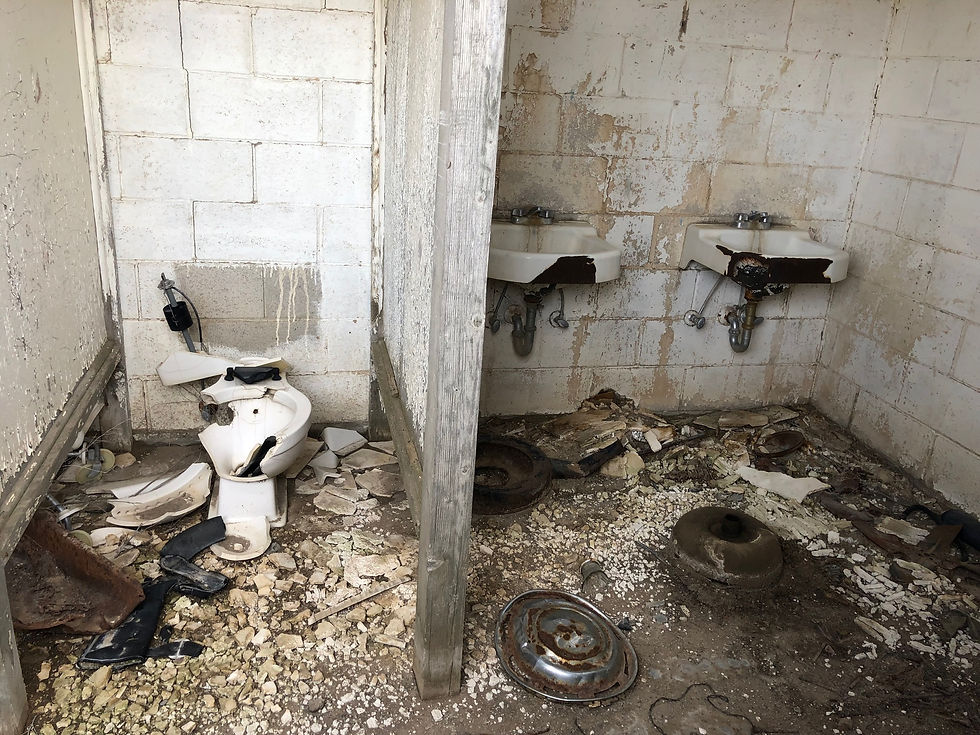The Taber Labor Camp
- deadheadcutflowers
- Apr 23, 2023
- 2 min read
At the intersection of Fullmerville Road and Township Road on the old Arco Highway, the decrepit remains of a labor camp stand as a reminder of the past.

About twenty boxcars and a more modern, set of cinderblock buildings, once a temporary home for pipemovers and farm workers, wait for the full effects of time to erase them.

The cinderblock structures were commonly used throughout the county in the 1950s and 1960s for migrant labor--farmers needed so many beet thinners, potato pickers, and other seasonal workers for short periods of time that there was always a scramble for help. Rockford, Aberdeen, and American Falls housed workers similarly. These buildings, though rudimentary, had running water.

Harvest time always presented a labor problem for farmers, the sudden needs of a crop coming in greater than what a family and friends--who were similarly burdened--could fulfill, so Mexican and Japanese labor was imported as early as the 1910s, and during WWII the government brought Italian and German prisoners, Japanese and Japanese-American internees, Jamaicans, and white Southerners into the county to work the fields.

The boxcars, though, may be one of a kind. They were put up by J.R. Simplot, along with the "biggest potato cellar in the world", on a large farming project in 1957. From the mid-fifties to the mid-sixties, farmers placed over a hundred thousand acres of land, much of it just broken out of sagebrush, under sprinkler irrigation, a goodly portion of it in RIsing River, north of Blackfoot bordering lava beds, and the "Taber Tract" northwest of Blackfoot, a huge section of arid but arable land promoters and homesteaders eyed first as prime for dry farming in the 1900s and, when that failed, as ripe for flood irrigation from a huge canal system called the Dubois Project. Capitalists planned to draw water from the Snake River above Ashton, go westward with a canal through Dubois and over to the Little Lost Area, then swing south through Taber before draining back in the Snake near American Falls--the proposed area to be irrigated varied from a million acres to a tenth of that, depending on which proponent was expounding his ambition. The "pipe dream" never took place, but sprinkler irrigation, itself a piping system that electricity's arrival enabled, brought it to reality.

(Idaho State Journal September 22, 1957 Page 19)

Comments